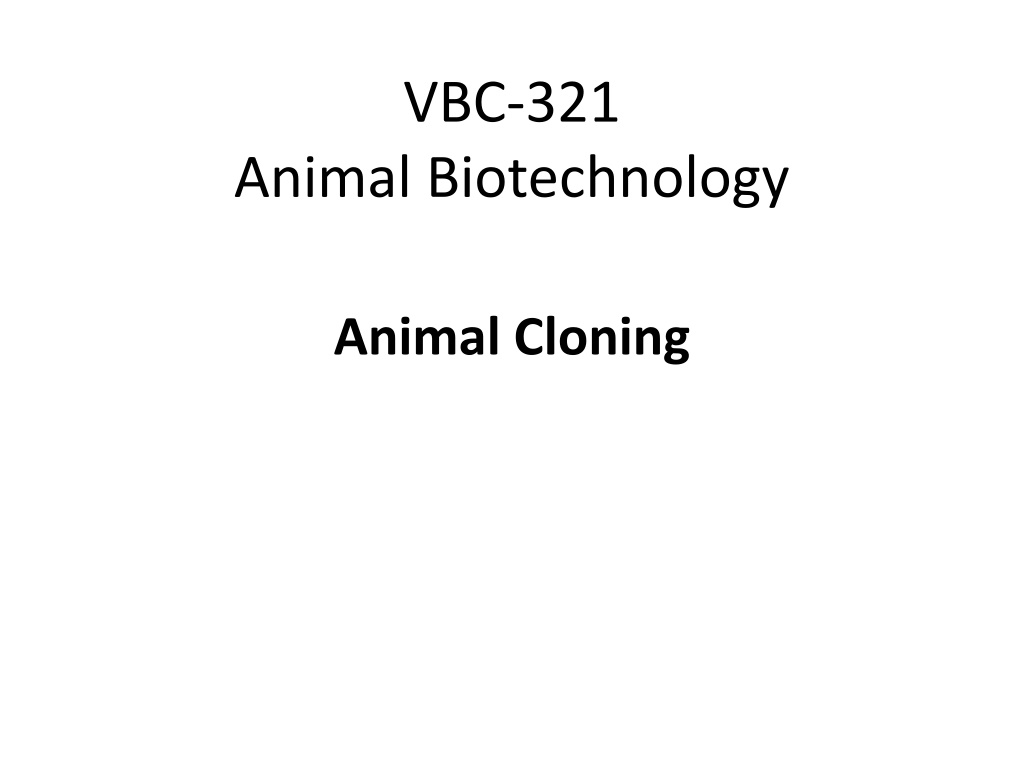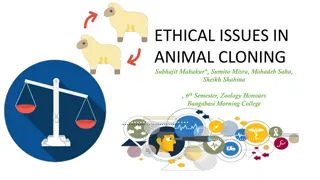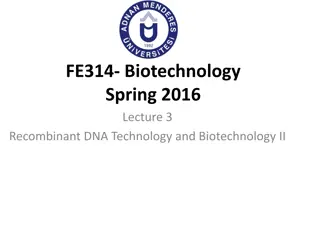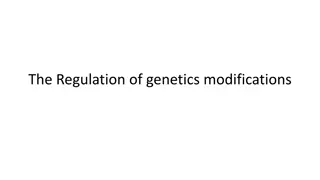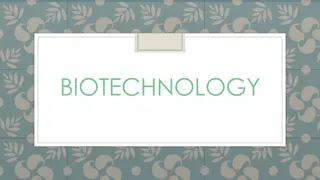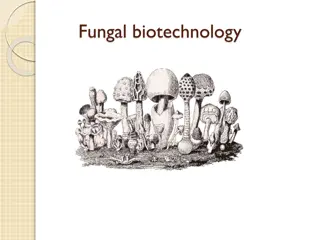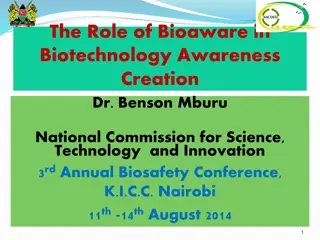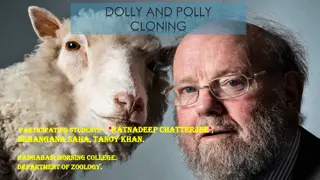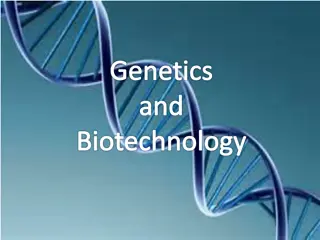Applications of Transgenic Animals in Biotechnology and Cloning
Cloning in animals offers the advantage of indefinite duplication of elite genotypes without the genetic risks of meiosis. Transgenic animals, genetically modified to carry foreign genes, play a crucial role in genetic research and the development of livestock with desired traits. Methods like DNA microinjection and retroviruses are used to introduce foreign genes into animal genomes, with steps like superovulation, pronuclear injection, and gene integration confirmation. Applications include enhancing economic traits in farm animals such as growth, carcass quality, and milk production.
Download Presentation

Please find below an Image/Link to download the presentation.
The content on the website is provided AS IS for your information and personal use only. It may not be sold, licensed, or shared on other websites without obtaining consent from the author. Download presentation by click this link. If you encounter any issues during the download, it is possible that the publisher has removed the file from their server.
E N D
Presentation Transcript
VBC-321 Animal Biotechnology Animal Cloning
Cloning in many situations, highly desirable since this allows Indefinite multiplication of an elite desirable genotype without the risk of segregation and recombination during meiosis, which must precede sexual reproduction holds a great promise in genetic research, and impact of epigenetic changes make it feasible to target transgenes in livestock by nuclear transfer from transgenic cell populations developed in vitro into enucleated oocytes to recover transgenic animals
TRANSGENIC ANIMALS Gordon and Ruddle used the term Transgenic for the first time in 1982 to describe genetically modified animals harboring foreign genes within their genome main objective in the generation of transgenic animals to guarantee that all the somatic cells and germ line cells carry the foreign gene Production of transgenic animals involves a series of steps, starting with cloning of the gene of interest and preparation of DNA samples both cloned and chemically synthesized DNA fragments can be used for microinjection Microinjected embryos are usually transferred to the recipients after a short period of in vitro culture
Several methods are available for introduction of DNA into an animal genome. These include DNA- microinjection into pronuclear stage of embryos Use of retro viruses
STEPS IN PRODUCTION OF TRANSGENIC ANIMALS BY DNA MICRO INJECTION Females are superovulated and mated/ inseminated Pronuclear stage eggs are recovered after 12 hrs Pronuclear transgene DNA construct is injected into the male pronuclei by using micromanipulator Embryos after microinjection are transferred to recipients and allowed to develop to term Integration of the foreign gene in the new born animals could be confirmed by techniques like Polymerase chain reaction Southern hybridization In situ Hybridization
APPLICATIONS OF TRANSGENIC ANIMALS To improve economic traits of farm animal like growth promotion, carcass improvement and milk production To develop disease resistant animals To produce a variety of biologicals and pharmaceuticals To understand in vivo gene regulation
USES OF TRANSGENIC ANIMALS Basic research Knockout mice for determining the function of a gene To study effects of gene products,biochemical pathways, alternative (compensatory) pathways, and developmental pathways To recreate human diseases in animals to establish models to test the beneficial effects of drugs or gene therapy Knockout mice for genetic disease models
Production of useful proteins Naked human Hb from pigs Human lactoferrin in cows milk Alpha-1-antitrypsin in sheep HGH in mouse urine (uroplakinpromoters) Human antibodies in mice (H and Lchain tgenics hybridomas) Tissue plasminogen activator (TPA)in goats Human antithrombin III in goats Malaria antigens in goats(vaccine) Alpha-glucosidase in rabbits(Pompe s disease
Bioreactor Genes transfered into animal with aview to obtain a large scale production of protein encoded by these genes in milk, urine, blood of such animal These animals are bioreactor and approach is called molecular farming or gene farming
BIOPHARMING Biopharming is known as the production of pharmaceutical proteins using genetically engineered plants promise to produce large and low-cost supplies of pharmaceutical drugs which includes vaccines for infectious diseases and therapeutic proteins for treatment of cancer and heart diseases The proteins produced by the genetically engineered plants are called as Plant-made pharmaceuticals (PMPs) The most common biopharm crops grown in US field trials are corn, tobacco and rice Other crops being studied include alfalfa, potato, soybean, sugarcaen and tomato
NEED FOR BIOPHARMING Many pharmaceutical drugs have been produced in sterile fermenters by mammalian cells or using genetically engineered microorganisms. As the construction of huge fermentation plants incurs huge capital cost, the production costs also very high Another method of production of biopharmaceuticals is to extract it from animal and human tissues such as insulin from pig and cow pancreas or blood proteins from human blood. But these procedures carry the risk of transmitting infectious diseases to humans As there is advance in the techniques of manipulating the plant genome over the past several years, plants can be used to produce a wide range of important proteins It is hoped that this will result in therapeutic products at a price significantly cheaper than through current methods of production
CRITERIA TO SELECT A PLANT FOR BIOPHARM PRODUCTION It should be easily engineered It should be capable of production of high levels of proteins Appropriate technique should be available to extract the proteins from plant tissues Ideally the host plant should be non-food crop or the food crop should be completely sterile to avoid cross-pollination with near by field crops
RISKS OF BIOPHARMS Pollen from plants engineered to produce pharmaceuticals may fertilize nearby food or feed crops of the same species. If this occurs, the pharmaceutical may be produced in seed of the neighboring crop, with potentially negative effects on human or animal consumers of the seed The introduced gene or its product may have negative effects on the natural environment Farm workers may be exposed to unhealthy levels of a biopharmaceutical by absorbing products from leaves through their skin, inhaling pollen, or breathing in dust at harvest Unexpected toxins or residues of pesticides used on the crop may contaminate the final drug product
